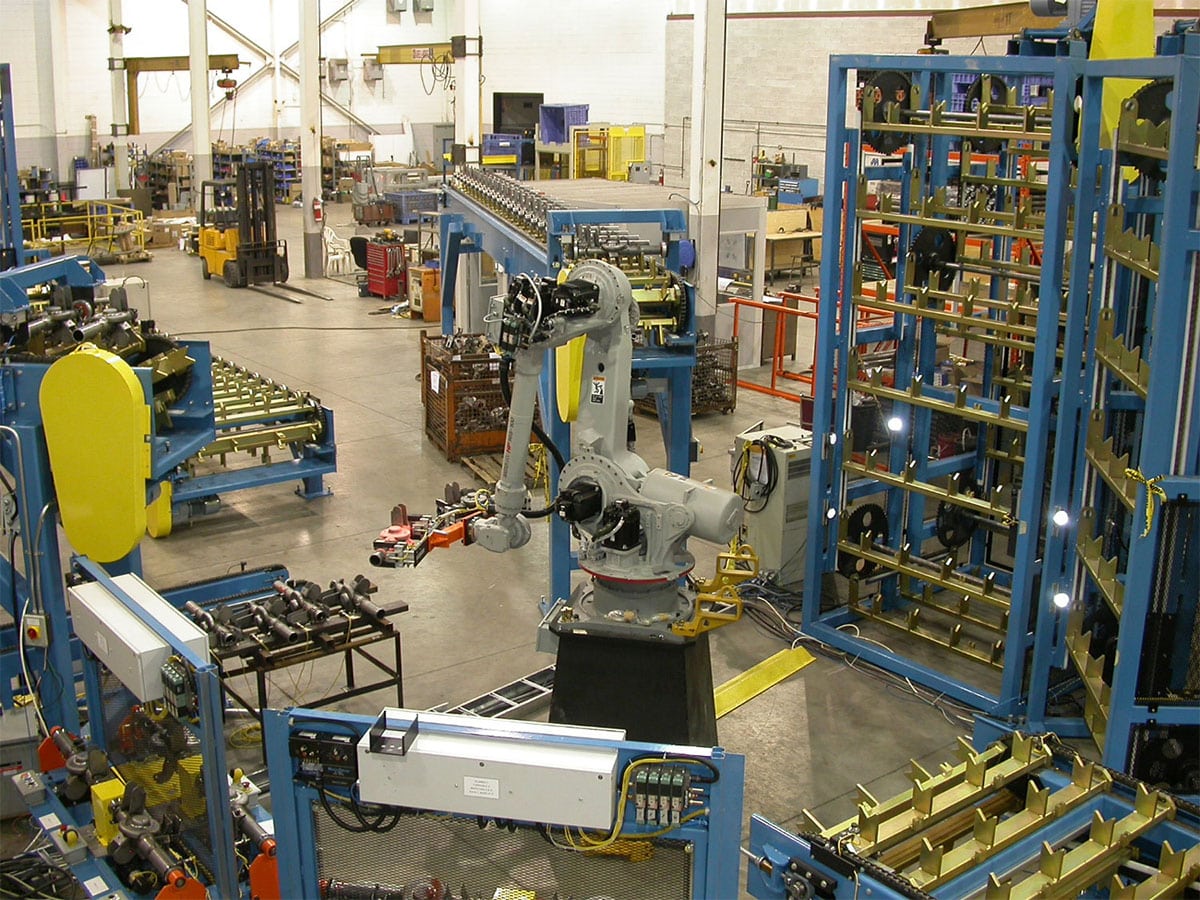In today’s rapidly evolving manufacturing landscape, industrial robots and robotic manufacturing have emerged as key drivers of innovation and efficiency. The integration of robotics in manufacturing has revolutionized the process. It can provide a wide range of advantages to companies seeking to improve productivity, quality, or competitiveness. Manufacturing robots will play an increasing influence on the future of manufacturing as the demand for solutions that automate production increases.

Manufacturing robots (also referred to as industrial robotics) are specially designed machines to carry out various tasks in factories. This can involve welding or painting, assembly picking and placing, packaging and many more. Industrial robotics, the field of study and application of these robotics, focuses on maximizing efficiency and precision in manufacturing operations.
Automated Solutions Australia, a business that specializes in the creation of industrial robots to offer flexible solutions to manufacturing clients, is at the forefront. ASA’s industrial robots help clients gain an edge in the market through boosting productivity and quality. ASA’s industrial robot solutions that are built on best practices with the importance of quality, are used by companies across many industries like electronic manufacturing, pharmaceuticals, automobiles and more.
The advantages of using industrial robots in manufacturing have many facets. The improvement of efficiency and productivity is among the biggest benefits. Industrial robots can handle repetitive tasks with accuracy and a consistent manner. This results in increased productivity and lower cycles. This boosts productivity overall and allows businesses to easily keep up with consumer demand.
Industrial robots also help improve the quality control of manufacturing processes. Robots are able to perform tasks more precisely and with higher accuracy and. This results in higher-quality products. This results in a higher degree of satisfaction with the customer and a greater image for the company.
Industrial robots provide not just efficiency and quality but also cost-saving advantages. While the initial investment in manufacturing robots could seem significant, the long-term cost savings are substantial. Businesses are able to quickly pay back their investment by reducing operational costs by streamlining production processes and removing the need for human labor. In addition, industrial robots are available 24/7 to maximize the utilization of resources while cutting production costs.
Industrial robots have a positive impact on the work environment. They are specifically designed to produce low noise levels which create a more peaceful and more comfortable working environment for employees. Additionally their speed and precision help to make the workplace more secure by reducing the risk of injuries and accidents.
The incorporation of industrial robots plays an important role in creating jobs as well as the future job. While there may be concerns about automation displacing human workers however, the reality is that industrial robots offer new opportunities to work. Opportunities include positions that involve programming robots maintenance, oversight, and control, as well as the development of innovative technologies to support robotic manufacturing.
The manufacturing industry is continuing to take on the potential of industrial robots. Businesses across all industries are reaping the benefits of this revolutionary technology. With its ability to enhance efficiency, quality, and cost-effectiveness industrial robotics is changing how products are produced and setting new standards for excellence in the industry.
In conclusion, the emergence of industrial robots and manufacturing robotics is an evolution in the manufacturing industry. The integration of these modern technologies has enabled businesses to increase productivity to levels that are unimaginable accuracy, precision, and efficiency. Industrial robots will play a key function as the need for automation continues to increase. They can help in shaping the future of manufacturing and propel innovation.